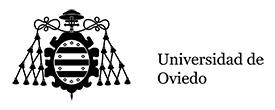Estudia
- Artes y humanidades
- Ciencias
- Ciencias de la salud
- Ciencias sociales y jurídicas
-
Ingeniería y arquitectura
- Doble Máster Universitario en Ingeniería Industrial e Ingeniería Energética
- Máster Erasmus Mundus en Ingeniería Mecatrónica
- Máster Universitario Erasmus Mundus en Tecnología y Gestión para la Economía Circular
- Máster Erasmus Mundus en Transporte Sostenible y Sistemas Eléctricos de Potencia
- Máster Universitario en Ciencia y Tecnología de Materiales
- Máster Universitario en Conversión de Energía Eléctrica y Sistemas de Potencia
- Máster Universitario en Conversión de Energía Eléctrica y Sistemas de Potencia (Plan antiguo)
- Máster Universitario en Dirección de Proyectos
- Máster Universitario en Geotecnología y Desarrollo de Proyectos SIG
- Máster Universitario en Ingeniería de Automatización e Informática Industrial
- Máster Universitario en Ingeniería de Caminos, Canales y Puertos
- Máster Universitario en Ingeniería de Minas
- Máster Universitario en Ingeniería de Telecomunicación
- Máster Universitario en Ingeniería Energética
- Máster Universitario en Ingeniería Industrial
- Máster Universitario en Ingeniería Informática
- Máster Universitario en Ingeniería Mecatrónica
- Máster Universitario en Ingeniería Química
- Máster Universitario en Ingeniería Web (nuevo-implantación en curso 2024-25)
- Máster Universitario en Ingeniería Web (En Extinción)
- Máster Universitario en Integridad y Durabilidad de Materiales, Componentes y Estructuras
- Máster Universitario en Náutica y Gestión del Transporte Marítimo
- Máster Universitario en Tecnologías Marinas y Mantenimiento
- Máster Universitario en Prevención de Riesgos Laborales
- Información, acceso y becas
Informática Aplicada a la Resolución de Problemas en Ingeniería Química
- Prácticas de Aula/Semina (6 Hours)
- Prácticas de Laboratorio (43 Hours)
- Clases Expositivas (6 Hours)
The course “Applied Chemical Engineering Computing” belongs to the “Process and Product Engineering” module of the master’s degree in Chemical Engineering of the University of Oviedo. The course is mandatory, and it is taught at the first semester of the first course.
The main objective of this course is to provide the students the ability to solve advanced problems in Chemical Engineering using adequate computer software. In this course, the competences of the bachelor level are extended and the students are prepared to take other courses from the master’s degree and the master thesis.
The only requisites are those mandatory to be accepted in the master in Chemical Engineering.
Anyway, it is recommended in order to make a better use of the course that the student has a basic knowledge in mathematics (algebra, calculus, numerical methods and statistics) and chemical engineering (mass and energy balances, transport phenomena, unit operations, and chemical reactors).
This course aims to develop the following skills:
General skills:
CG1. Be able to apply the scientific method and the principles of engineering and economy to formulate and solve complex problems of processes, operations, systems and services where matter changes in composition, state, or energy content, characteristic of the chemical industry and other related sectors, such as pharmaceutical, biotechnological, material, energy, food, or environmental.
CG5. Be able to develop mathematical models and be competent in the use of computer methods for solving them, as a scientific and technological base for the design of new processes, systems, facilities and products, as well as to optimize the existing ones.
Specific skills:
CIPP1. Have a knowledge and understanding of Mathematics, Physics, Chemistry, Biology and other Sciences necessary to support application of key engineering principles.
CIPP3. Be able to develop mathematical and computer models relevant to the chemical engineering discipline, and an appreciation of their limitations. Awareness of developing technologies related to chemical engineering.
CIPP4. Be able to solve problems, design processes and methodologies, and have the ability to apply and adapt them in unfamiliar situations. Be capable of generating an innovative design for processes, systems and products to fulfil new needs.
Upon completion of this course, students are expected to achieve the following learning outcomes:
RAIAIQ1. Be competent in the use of a spreadsheet software for solving chemical engineering problems.
RAIAIQ2. Be aware of the use of a statistical analysis package for the design of experiments, as well as for data analysis and regression.
RAIAIQ3. Be competent in the use of a numerical computing software (MATLAB) for solving problems relevant to the Chemical Engineering discipline.
RAIAIQ4. Be able to solve complex Chemical Engineering problems involving partial differential equations (PDEs) using the appropriate software.
SECTION I. BASIC CONCEPTS
Lesson 1. Introduction to modelling and problem solving
Lesson 2. Software tools for the Chemical Engineer
SECTION II. DATA ANALYSIS IN CHEMICAL ENGINEERING
Lesson 3. Data management and analysis
Lesson 4. Design and analysis of experiments
Lesson 5. Advances techniques of data analysis
SECTION III. MODEL SOLVING IN CHEMICAL ENGINEERING
Lesson 6. Solving of algebraic models
Lesson 7. Solving of differential models
Lesson 8. Optimization and parameter estimation
SECTION IV. DESIGN AND DETAILED ANALYSIS OF PROCESS EQUIPMENT
Lesson 9. Solving based on finite element methods
Lesson 10. Computational fluid dynamics
The course “Applied Chemical Engineering Computing” is a practical course of 4.5 ECTS with a degree of face-to-face lectures of 50%. This means that the total 112.5 hours of the course are divided into 55 h of face-to-face lectures and 57.5 h of non-contact work. In the following table, the distribution of the different teaching methodologies are summarized:
Face-to-face lectures Hours
Lectures 3 2.7%
Classroom practices 6 5.3%
Computer lab practices 43 38.2%
Evaluation 3 2.7%
Non-contact work
Group work 18 16.0%
Individual work 39.5 35.1%
Total 112.5
The methodology followed in this course is based on practical sessions in the computer laboratory, with a total of 43 h. During the computer laboratory, the lecturer will explain the use of the different software, guiding the students in the solving of proposed problems in the scope of Chemical Engineering. Then, the lecturer proposes new problems, and the students have time to solve them individually or in groups; the lecturer is available at all time to solve doubts and difficulties.
In addition to the computer laboratory practices, the course includes 3 h of lectures and 6 h of classroom practices. During classroom practices, the students will make an oral presentation of the proposed tasks, followed by a discussion of the results.
At the beginning of the course, the students will be given information about the course, in class and through the Virtual Campus, about the Teaching guide, the course scheduling and evaluation. The students will have in advance through the Virtual Campus the material of the course, including the statement of the tasks proposed in the context of the Classroom Practices.
In this subject, activities outside the classroom can also be carried out, such as visits to companies, research centres, attendance at seminars, etc. In each academic course, students will be informed of the schedule of these activities in advance.
The contribution to the final mark of the different types of evaluation, valid for the ordinary and extraordinary exam periods, are summarized in the following table:
Types of evaluation Learning outcomes Percentage
Practice evaluation Todos 50%
Final evaluation Todos 50%
Practice evaluation
The attendance and benefit of the Computer laboratory and Classroom practices is compulsory; in duly justified cases, an attendance higher than 80% will be accepted. The work done by the student during the course will be considered to evaluate this topic. Specifically, the tasks proposed through the Virtual Campus and the active participation of the students during the Classroom practices. A 50% of the total mark of the course will correspond to the evaluation of this topic.
Final evaluation
At the end of the course, the student must pass an exam consisting on problem solving in the computer room. A 50% of the total mark will correspond to the mark obtained in the final exam.
To pass the course, in all the exam periods, the mark obtained in the Final evaluation cannot be lower than 40% of its higher value. If this condition is met, the final mark will be calculated using the percentages indicated in the previous table.
In the extraordinary exam periods (May and June), the final mark will be calculated in the same way as in ordinary exam periods, taking into account the percentages indicated in the previous table. In case of absence of mark for Practice evaluation (for not having attended), a mark equal to cero will be assigned to this item for all the extraordinary exam periods.
Reference bibliography:
1. Finlayson, B.A. "Introduction to chemical engineering computing." 2nd ed. Wiley (2012).
2. Martin, M. “Introduction to software for chemical engineers” 2nd ed. CRC Press (2019)
Additional bibliography:
1. Hahn, B., Valentine, D.T. "Essential MATLAB for Engineers and Scientists." 3rd ed Elsevier (2007)
2. Montgomery, D.C. "Design and Analysis of Experiments." 10th ed. Jonh Wiley & Sons (2019)
3. Edgar, T.F. “Optimization of Chemical Processes” 2nd ed. McGraw-Hill (2001)
4. Pryor, R.W. “Multiphysics modelling with COMSOL and MATLAB”. Mercury Learning and Information (2016)
5. Andersson, B. ”Computational Fluid Dynamics for Engineers.” Cambridge University (2012)

